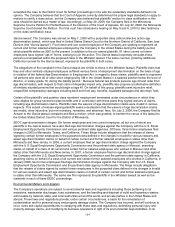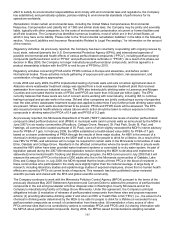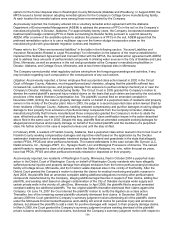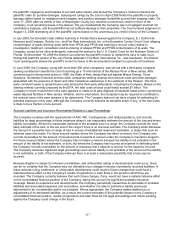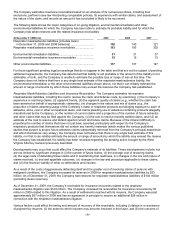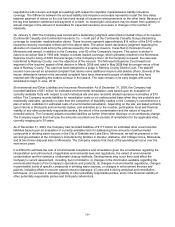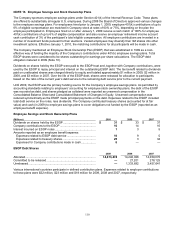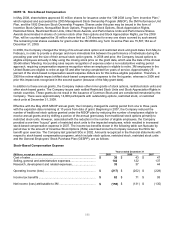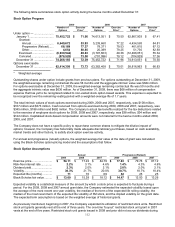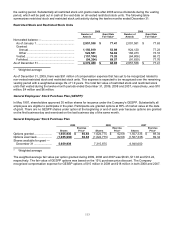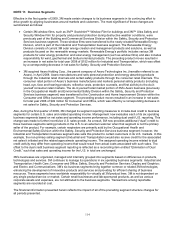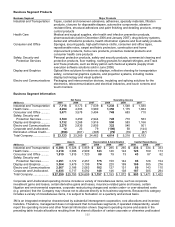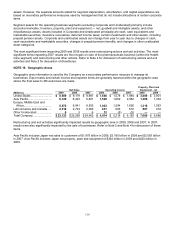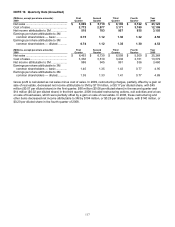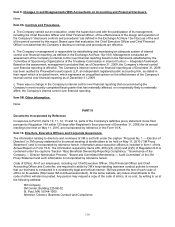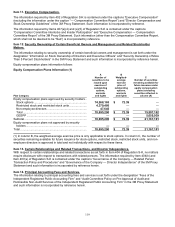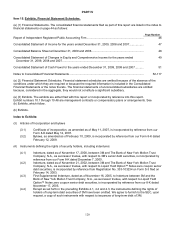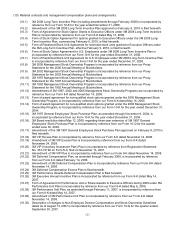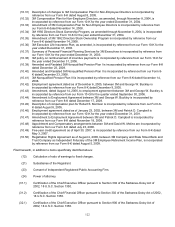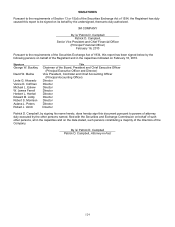3M 2009 Annual Report Download - page 120
Download and view the complete annual report
Please find page 120 of the 2009 3M annual report below. You can navigate through the pages in the report by either clicking on the pages listed below, or by using the keyword search tool below to find specific information within the annual report. 114
NOTE 17. Business Segments
Effective in the first quarter of 2009, 3M made certain changes to its business segments in its continuing effort to
drive growth by aligning businesses around markets and customers. The most significant of these changes are
summarized as follows:
• Certain 3M window films, such as 3M™ Scotchtint™ Window Film for buildings and 3M™ Ultra Safety and
Security Window Film for property and personal protection during destructive weather conditions, were
previously part of the Building and Commercial Services Division within the Safety, Security and Protection
Services business segment. These window films were transferred to the newly created Renewable Energy
Division, which is part of the Industrial and Transportation business segment. The Renewable Energy
Division consists of current 3M solar energy creation and management products and solutions, as well as
products focused on the renewable energy markets. Renewable Energy’s portfolio includes various 3M
products for solar energy production and solar energy management (such as window films) and also includes
responsibility for wind, geothermal and biofuel-oriented products. The preceding product moves resulted in
an increase in net sales for total year 2008 of $152 million for Industrial and Transportation, which was offset
by a corresponding decrease in net sales for Safety, Security and Protection Services.
• 3M acquired Aearo Holding Corp., the parent company of Aearo Technologies Inc. (hereafter referred to as
Aearo), in April 2008. Aearo manufactures and sells personal protection and energy absorbing products
through the industrial retail channels and certain safety products through the consumer retail channels. The
consumer retail portion of Aearo’s business manufactures and markets personal safety products (including
head, eye, face and hearing products, reflective vests, protective coveralls, and first aid kits) to the do-it-
yourself consumer retail markets. The do-it-yourself retail market portion of 3M’s Aearo business (previously
in the Occupational Health and Environmental Safety Division within the Safety, Security and Protection
Services business segment) was transferred to the Construction and Home Improvement Division within the
Consumer and Office business segment. The preceding product moves resulted in an increase in net sales
for total year 2008 of $49 million for Consumer and Office, which was offset by a corresponding decrease in
net sales for Safety, Security and Protection Services.
Also, during the first quarter of 2009, 3M changed its segment reporting measures to include dual credit to business
segments for certain U.S. sales and related operating income. Management now evaluates each of its six operating
business segments based on net sales and operating income performance, including dual credit U.S. reporting. This
change was made to further incentivize U.S. sales growth. As a result, 3M now provides additional (“dual”) credit to
those business segments selling products in the U.S. to an external customer when that segment is not the primary
seller of the product. For example, certain respirators are primarily sold by the Occupational Health and
Environmental Safety Division within the Safety, Security and Protection Services business segment; however, the
Industrial and Transportation business segment also sells this product to certain customers in its U.S. markets. In this
example, the non-primary selling segment (Industrial and Transportation) would also receive credit for the associated
net sales it initiated and the related approximate operating income. The assigned operating income related to dual
credit activity may differ from operating income that would result from actual costs associated with such sales. The
offset to the dual credit business segment reporting is reflected as a reconciling item entitled “Elimination of Dual
Credit,” such that sales and operating income for the U.S. in total are unchanged.
3M’s businesses are organized, managed and internally grouped into segments based on differences in products,
technologies and services. 3M continues to manage its operations in six operating business segments: Industrial and
Transportation; Health Care; Consumer and Office; Safety, Security and Protection Services; Display and Graphics;
and Electro and Communications. 3M’s six business segments bring together common or related 3M technologies,
enhancing the development of innovative products and services and providing for efficient sharing of business
resources. These segments have worldwide responsibility for virtually all 3M product lines. 3M is not dependent on
any single product/service or market. Certain small businesses and lab-sponsored products, as well as various
corporate assets and expenses, are not attributed to the business segments. Transactions among reportable
segments are recorded at cost.
The financial information presented herein reflects the impact of all of the preceding segment structure changes for
all periods presented.


